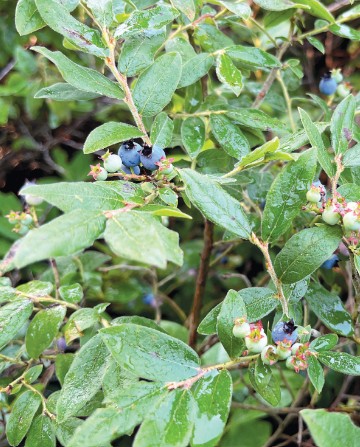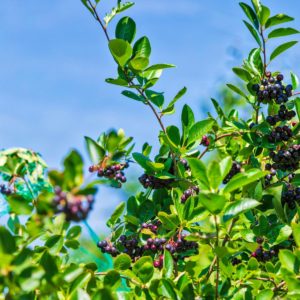Lowbush Blueberry (Vaccinium angustifolium)
$35.00
Plant Size: 1 Gallon Pot
Name: Lowbush Blueberry – Vaccinium angustifolium
Type: Shrub
Growth Characteristics Lowbush Blueberry is a flowering deciduous shrub with edible fruit. It features small, white, bell-shaped flowers with pink/reddish edges, which bloom April-May. The sweet and edible fruit ripens in summer and provides an important food source for birds. The berries are used in pies, muffins, and other dishes and eaten fresh. The showy fall foliage is bronze, scarlet, and crimson.
Hardiness: Climate zones 2-6
Bloom Color: White/pink
Bloom Time: June
Mature Plant Size: 2′ Height, 2′ Width
Light Requirements: Full Sun, Partial Shade
Soil Preference: Loam, Sandy – Moist to Dry – Acidic, Slightly Acidic, Neutral, Slightly Alkaline
SITE CONSIDERATIONS
Lowbush blueberry (Vaccinium angustifolium) is an excellent choice as a deciduous woody groundcover in the garden. Lowbush blueberry thrives in a moist, highly organic, well-drained, acidic soil in full sun to filtered shade. Best flowering and fruiting occurs when several plants are grown together. When grown in ideal conditions, lowbush blueberry will form extensive, dense colonies that will reward you with edible berries. Can also be planted in a rock garden, woodland setting, along borders, as a tall groundcover, as small hedges, or in naturalized areas of your yard.
Value to Wildlife and Insects
Offers a valuable nectar source to native bees. Provides an important food source for birds.
ADDITIONAL FACTS UNIQUE TO THE SPECIES (IF ANY)
The Vaccinium angustifolium plant is fire-tolerant and its numbers often increase in an area following a forest fire. Traditionally, blueberry growers burn their fields every few years to get rid of shrubs and fertilize the soil. In Acadian French, a blueberry field is known as a “brûlis” (from brûlé, burnt) because of that technique, which is still in use.
Availability: 10 in stock





